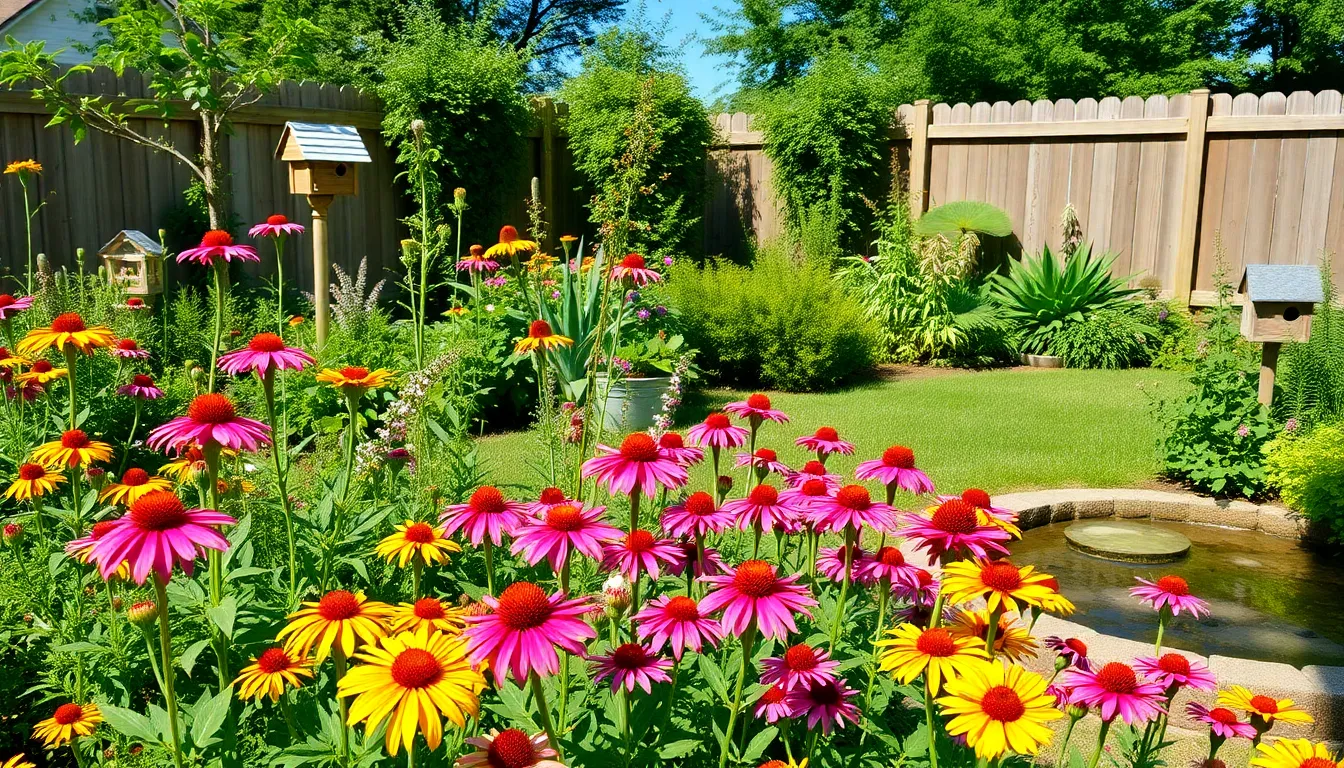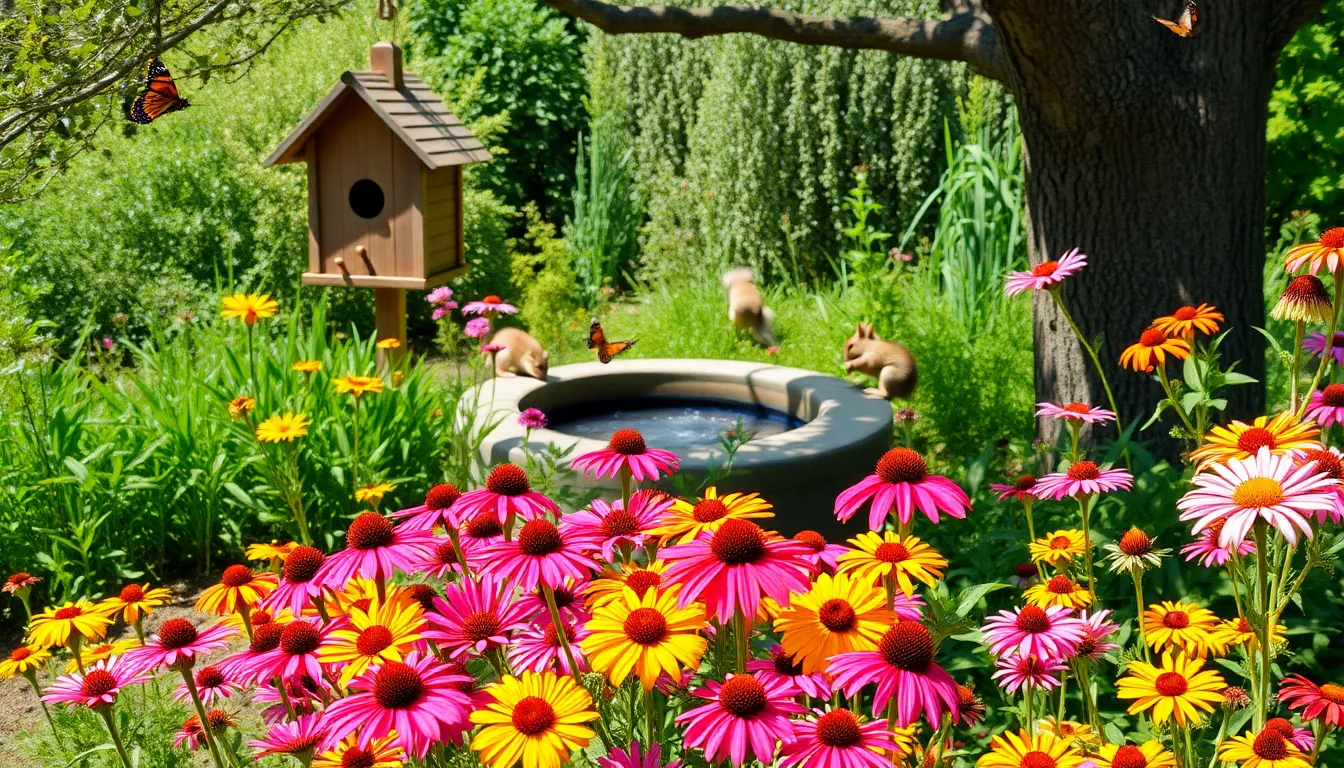Imagine stepping into your backyard and being greeted by a chorus of chirping birds, fluttering butterflies, and maybe even a curious squirrel or two. Creating a wildlife-friendly garden isn’t just a noble endeavor; it’s a delightful way to invite nature right to your doorstep. With a sprinkle of creativity and a dash of eco-consciousness, anyone can transform their outdoor space into a vibrant haven for local critters.
Table of Contents
ToggleBenefits Of A Wildlife-Friendly Garden
Creating a wildlife-friendly garden provides multiple benefits. These advantages not only improve the garden’s aesthetic appeal but also foster a vibrant ecosystem.
Biodiversity Enhancement
Wildlife-friendly gardens increase biodiversity significantly. A diverse range of plants attracts various pollinators like bees and butterflies. Birds also thrive in gardens with native plants, offering natural food sources and nesting opportunities. Additionally, these gardens create habitats for beneficial insects, like ladybugs and lacewings, which help control pests. Protecting and nurturing a variety of species promotes a healthy ecological balance. Each plant species contributes to this synergy, making the garden a more resilient environment.
Ecosystem Support
Wildlife-friendly gardens support local ecosystems effectively. Establishing native plants improves soil health and water retention. Birds and insects participate in pollination, which enhances nearby crops and flowering plants. Incorporating water features provides drinking and bathing spots, benefiting diverse species. Organic gardening practices, such as composting and avoiding pesticides, promote a more sustainable environment. Cooperative interactions between plants and wildlife facilitate nutrient cycling and enhance overall garden vitality. Adopting these practices strengthens the garden’s role in supporting a thriving ecosystem.
Designing A Wildlife-Friendly Garden

Creating a wildlife-friendly garden involves thoughtful planning and design choices that enhance both aesthetics and biodiversity. Prioritizing native plants and creating diverse habitats fosters a welcoming environment for local wildlife.
Selecting Native Plants
Native plants thrive in regional climates and require less maintenance. These plants support local pollinators like bees and butterflies, providing essential food sources. Examples include coneflowers, milkweed, and black-eyed Susans. Additionally, they adapt to local soil and weather conditions, often needing less water than non-native species. Incorporating a mix of flowering plants ensures year-round blooms, attracting a variety of wildlife. Furthermore, native grasses and shrubs offer shelter for small animals and birds.
Creating Habitats
Designing specific habitats within the garden benefits various wildlife. Incorporating elements like birdhouses, bee hotels, and butterfly gardens invites diverse species. Logs, rocks, and native shrubs create shelter for insects and small mammals. Water features such as ponds or small fountains provide hydration and breeding grounds for frogs and insects. Planting dense vegetation along edges creates natural barriers and nesting sites. Ensuring an unobstructed flow between these habitats enhances ecological interactions, allowing wildlife to thrive.
Attracting Wildlife To Your Garden
Attracting wildlife transforms a garden into a vibrant ecosystem, enhancing biodiversity and fostering connections with nature. Focusing on specific elements encourages a diverse range of species.
Birdhouses And Feeders
Birdhouses serve as essential nesting sites for various bird species. Choosing birdhouses appropriate for local birds promotes successful nesting. Feeders filled with seeds attract cardinals, finches and other songbirds. Using various feeders, including tube and platform styles, accommodates different feeding preferences. Selecting native plants nearby provides natural food sources, enhancing the garden’s appeal. Regular cleaning of birdhouses and feeders keeps birds healthy and returning for more food.
Insect Hotels
Insect hotels attract beneficial insects, supporting crucial pollination and pest control. Constructing diverse compartments accommodates various insects, such as bees, ladybugs and butterflies. Incorporating materials like bamboo, straw and wood creates inviting habitats for these species. Placing insect hotels in sunny, sheltered areas encourages occupancy and activity. Choosing locations near flowering plants enhances food availability, establishing a thriving ecosystem. Regular maintenance ensures these habitats remain functional, maximizing their benefits for wildlife in the garden.
Maintaining A Wildlife-Friendly Garden
Maintaining a wildlife-friendly garden requires ongoing care and attention. Regular efforts ensure continued support for the local ecosystem.
Sustainable Practices
Embracing organic gardening practices promotes health and sustainability. Chemical pesticides and fertilizers harm beneficial insects and birds. Instead, gardeners can use natural pest control methods like encouraging ladybugs to manage aphids. Composting enriches soil, supporting plant health while reducing waste. Mulching helps retain moisture and suppresses weeds, creating ideal conditions for wildlife. Prioritizing native plants fosters resilience, as they thrive in regional climates while attracting specific pollinators. Implementing these sustainable approaches strengthens the garden’s ecological balance and provides long-term benefits.
Seasonal Considerations
Adapting gardening practices based on seasonal changes improves the environment for wildlife. During spring, planting native flowers establishes early blooming sources for pollinators. Summer demands water management; providing shallow dishes supports thirsty insects and birds. As fall approaches, leaving seed heads on plants offers valuable food resources. Winter presents an opportunity for shelter, as leaving some foliage and twigs creates habitats for overwintering species. Understanding these seasonal shifts maximizes the garden’s potential as a vibrant sanctuary for wildlife throughout the year.
Creating a wildlife-friendly garden offers a rewarding experience that benefits both nature and the gardener. By incorporating native plants and thoughtful design elements, individuals can attract a variety of wildlife while enhancing their outdoor spaces. This approach not only promotes biodiversity but also strengthens local ecosystems.
Regular maintenance and sustainable practices ensure that the garden remains a thriving habitat throughout the seasons. With each thoughtful addition, from birdhouses to water features, the garden transforms into a vibrant sanctuary for local wildlife. Embracing this journey fosters a deeper connection to nature and contributes positively to the environment.







